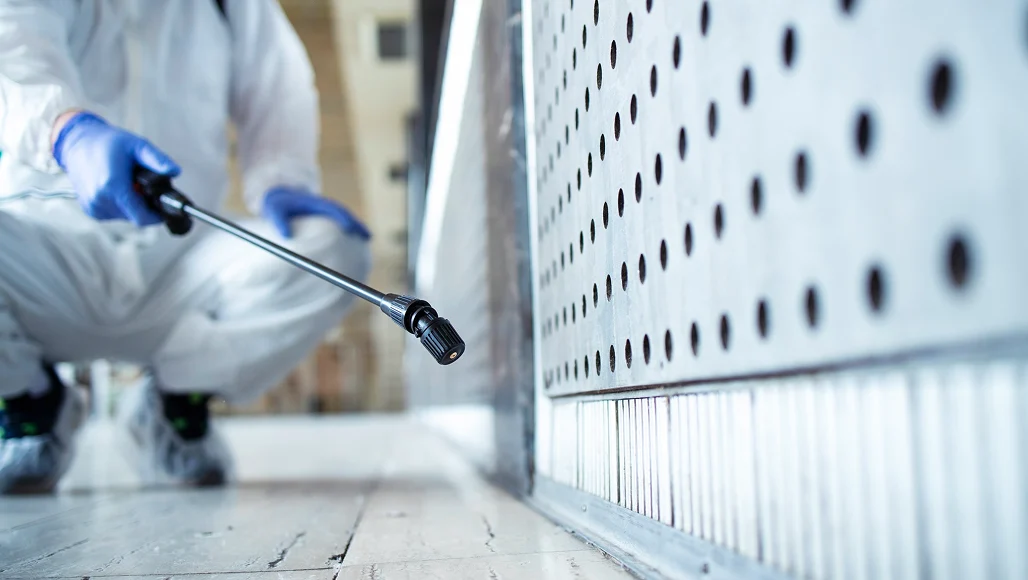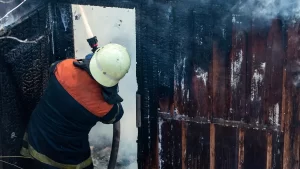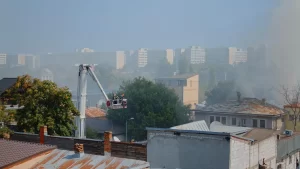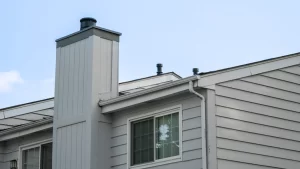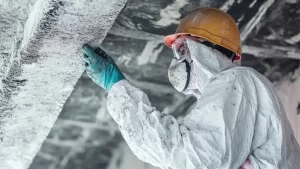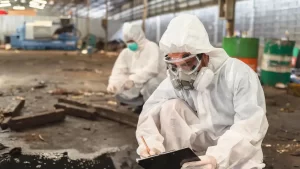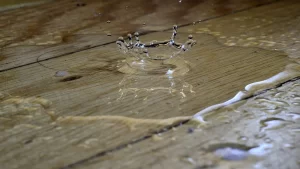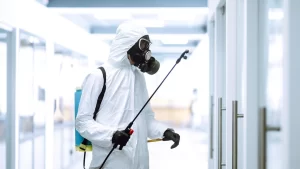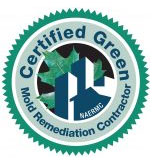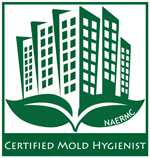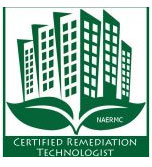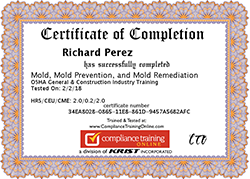Mold is a common problem in homes and buildings, often appearing in damp or poorly ventilated areas such as
bathrooms, basements, and attics. It can cause a range of issues, from unpleasant odors and unsightly stains
to serious health concerns for residents. Understanding the presence of mold and its potential impact is the
first step in addressing the problem effectively.
Proper budgeting for mold remediation is essential to ensure the problem is handled safely and thoroughly.
Costs can vary widely depending on the size of the affected area, the type of mold, and whether professional
services are required. Hiring a California Certified mold
remediation team helps homeowners plan, avoid unexpected expenses, and ensure that remediation is completed
to the highest professional standard.
The total cost of mold remediation is influenced by multiple factors, including the severity of the
infestation, the specific mold species involved, and the complexity of the remediation process. Working with
a California Certified specialist ensures that homeowners make informed decisions and choose the most
appropriate solutions to protect both their property and their health.
Mold Remediation Costs
The cost of mold remediation can vary significantly depending on several key factors. Understanding these
factors can help homeowners plan and budget effectively for the process.
Factors that affect mold remediation costs include:
- Size of the affected area: Larger infestations require more labor, materials, and time
to remove, which increases the overall cost. - Type of mold: Some molds, such as black mold, require specialized handling and safety
precautions, which can make remediation more expensive. - Extent of damage: If mold has penetrated walls, floors, or HVAC systems, additional
repairs may be necessary, adding to the cost. - Location within the home: Mold in hard-to-reach areas or critical systems like
plumbing or air ducts can require specialized tools and techniques. - Professional versus DIY services: Hiring certified mold remediation professionals
typically costs more upfront but ensures thorough and safe removal.
Typical range of expenses homeowners might face:
- Minor mold removal in a small area may cost between $500 and $1,500.
- Moderate infestations affecting multiple rooms can range from $2,000 to $6,000.
- Severe or widespread mold problems, especially those involving structural damage or HVAC systems, may
exceed $10,000.
By understanding these cost factors, homeowners can make informed decisions about whether to handle mold
remediation themselves or hire professionals, ensuring both safety and effectiveness.
Mold Type
Mold comes in many varieties, each with distinct characteristics and potential health risks. Understanding
the type of mold present in a home is essential for determining the most effective remediation approach and
estimating costs
Common mold types include:
- Black mold: Known scientifically as Stachybotrys chartarum, black mold is
highly toxic and can cause severe health issues, including respiratory problems and allergic reactions.
Remediation of black mold often requires specialized containment and safety measures. - Cladosporium: A common household mold that can appear on wood, carpets, and fabrics.
It can trigger allergies, but it is generally less hazardous than black mold. - Aspergillus: Often found in damp areas, this mold can cause respiratory issues,
particularly in people with weakened immune systems. - Penicillium: Typically found on water-damaged materials, penicillium spreads quickly
and can cause allergic reactions.
The type of mold significantly influences both remediation methods and costs. Toxic molds like black mold
require professional intervention with protective equipment, specialized cleaning agents, and proper
disposal methods, which increases expenses. Less hazardous molds may be managed with standard cleaning
techniques, although professional assessment is still recommended for large or persistent infestations.
Identifying the mold type early, especially for toxic varieties, ensures that remediation is safe,
effective, and appropriately budgeted for professional mold removal costs.
Black Mold
Black mold is one of the most concerning types of mold due to its potential health risks and the challenges
it presents during remediation. It thrives in areas with consistent moisture, such as bathrooms, basements,
and around leaks, and can spread quickly if not addressed promptly. Exposure to black mold can lead to
serious health issues, including respiratory problems, chronic coughing, sinus infections, skin irritation,
and, in severe cases, neurological symptoms. Individuals with allergies, asthma, or weakened immune systems
are particularly vulnerable.
Challenges and factors that increase remediation costs include:
- Toxicity: Black mold requires strict safety protocols to prevent contamination during
removal, including protective gear and containment measures. - Specialized cleaning: Standard cleaning methods are often insufficient, so
professional-grade cleaners and techniques are necessary. - Structural inspection: Walls, floors, and HVAC systems may need a thorough inspection
to ensure mold has not penetrated hidden areas. - Disposal requirements: Materials contaminated with black mold often need to be safely
removed and disposed of to prevent regrowth or spreading. - Inspection and assessment: Identify the affected areas and determine the extent of
the mold growth. This may involve checking hidden areas such as behind walls or under flooring. - Containment: Prevent the spread of mold spores to unaffected areas using barriers
or negative air pressure systems. - Removal of contaminated materials: Porous materials like drywall, insulation, and
carpeting that are heavily affected may need to be removed and safely disposed of. - Cleaning and disinfecting: Non-porous surfaces are scrubbed with appropriate
cleaning agents to eliminate mold spores. - Drying and moisture control: Ensure the area is thoroughly dried and fix any
leaks or sources of moisture to prevent future growth. - DIY removal: Suitable for small, contained mold problems, typically less than 10
square feet. Homeowners must use protective gear and follow proper cleaning guidelines to avoid
health risks. - Professional removal: Recommended for larger infestations, black mold, or mold
that has affected critical systems such as HVAC. Professionals provide specialized equipment,
containment procedures, and certified cleaning methods, ensuring safe and thorough remediation. - Accurate assessment: Professionals can identify hidden mold and underlying
moisture problems that may not be visible to the untrained eye. - Safety measures: California Certified technicians use protective gear and
containment techniques to reduce exposure to mold spores. - Efficient remediation: Proper equipment and techniques allow for faster and more
thorough mold removal. - Long-term prevention: Professionals provide guidance on preventing future mold
growth and may recommend repairs or adjustments to ventilation and moisture control. - While professional services may have a higher upfront cost, their work often prevents recurring
mold problems, saving money in the long run. - California Certified specialists can safely handle toxic molds like black mold, reducing health
risks and potential liability. - Expertise ensures that remediation is completed according to industry standards, which can be
important for insurance claims or resale value. - Inspection and testing: Assess the extent of mold growth and identify the type
of mold present. - Containment: Use barriers and negative air pressure to prevent the spread of mold
spores during removal. - Removal and cleaning: Eliminate mold from affected surfaces, including walls,
floors, and HVAC systems. - Material replacement: Remove and replace contaminated materials such as drywall,
insulation, or carpeting. - Moisture control and prevention: Address leaks, improve ventilation, and recommend
long-term solutions to prevent mold recurrence. - Basic packages may include inspection, minor cleaning, and limited containment for small
infestations. - Comprehensive packages often cover large-scale remediation, material replacement, HVAC cleaning,
and follow-up inspections. - Pricing varies based on the size of the affected area, mold type, and level of service required, so
homeowners should compare packages to find the best fit for their needs. -
Small infestations: Areas under 10 square feet may cost between $500 and $1,500.
This usually covers minor cleaning and mold prevention measures. -
Moderate infestations: Areas between 10 and 50 square feet often range from
$2,000 to $6,000, including more extensive cleaning, containment, and limited material replacement. -
Large or severe infestations: Infestations over 50 square feet, or those involving
structural damage or HVAC systems, can exceed $10,000 due to labor, specialized equipment,
and professional safety measures. -
Black mold: Higher costs due to specialized safety precautions, equipment,
and disposal requirements. -
Mold in HVAC systems: Cleaning and remediation of ductwork can add
$1,000 to $3,000, depending on complexity. -
Water-damaged areas: Mold resulting from leaks or flooding may require
additional repairs to walls, floors, and insulation, increasing total costs. -
Identify and assess the mold: Look for visible signs of mold growth and check areas
prone to moisture, such as bathrooms, basements, and around leaks. -
Fix moisture issues: Repair leaks, improve ventilation, and control humidity levels
to create an environment where mold cannot thrive. -
Clean affected surfaces: Use appropriate cleaning agents for non-porous surfaces,
such as tiles, glass, or metal. -
Dispose of contaminated materials: Remove and safely discard heavily affected
porous materials like carpets, drywall, or insulation. -
Monitor for recurrence: Regularly inspect previously affected areas to catch
any new mold growth early. -
DIY remediation: Suitable for small, contained mold problems, usually less than
10 square feet, where the homeowner can safely use cleaning products and protective gear. -
Professional intervention: Recommended for larger infestations, toxic molds like
black mold, or mold that affects structural components, HVAC systems, or hidden areas.
Professionals provide thorough, safe, and effective remediation to prevent further damage. -
Control humidity levels: Keep indoor humidity below 50 percent using
dehumidifiers or air conditioners. -
Fix leaks promptly: Repair leaking roofs, pipes, and windows to eliminate
sources of moisture. -
Improve ventilation: Use exhaust fans in bathrooms and kitchens, and ensure
proper airflow in basements and attics. -
Regular cleaning: Clean and dry areas prone to moisture, including bathrooms,
basements, and around windows, to prevent mold spores from settling. -
Use mold-resistant materials: Consider mold-resistant drywall, insulation,
and paints in areas prone to dampness. -
Regular maintenance: Helps identify potential mold risks before they become
serious problems. -
Proper ventilation: Reduces condensation and keeps indoor air circulating,
which discourages mold growth. -
Controlling moisture: The most effective long-term strategy to prevent mold,
protecting both the home and the health of its occupants. -
Reduced air quality: Mold spores circulated by the system can trigger allergies,
asthma, and respiratory issues. -
Decreased efficiency: Mold buildup can obstruct airflow and force the system to
work harder, increasing energy costs. -
Potential damage: Persistent mold growth can corrode components, leading to
costly repairs or replacement. -
Inspection and testing: Professional assessment to determine the presence and
extent of mold, usually costing between $100 and $500. -
Cleaning and removal: Techniques include vacuuming, wiping, and applying
EPA-approved antimicrobial treatments to ducts and system components. Costs typically range from
$500 to $3,000, depending on system size and contamination level. -
Replacement of affected parts: Severely contaminated components, such as insulation
in ducts or coils, may need replacement, increasing overall remediation costs. -
Preventive measures: Installing UV lights, dehumidifiers, or scheduling regular
maintenance can reduce the risk of future mold growth.
Because of these challenges, remediation of black mold is typically more
expensive than other types of mold. Homeowners should expect higher labor costs, additional safety
measures, and potentially extended project timelines, all of which contribute to the overall expense.
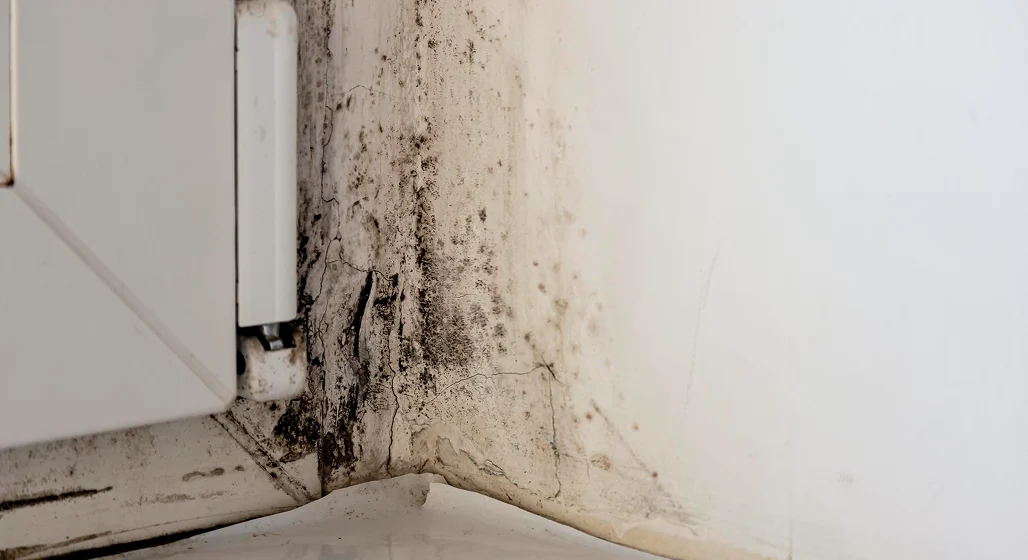
Mold Removal
Removing mold from a property involves several critical steps to ensure the infestation is fully
addressed and does not return. Effective mold removal focuses on both eliminating visible mold and
addressing the underlying moisture issues that allow mold to grow.
Steps involved in mold removal include:
DIY versus professional removal considerations:
Choosing the right approach depends on the severity of the mold problem, the type of mold present, and
the homeowner’s ability to manage the risks safely.
Professional Mold Remediation
Hiring a California Certified Mold
Remediation professional ensures that mold problems are addressed safely, efficiently, and
thoroughly. These specialists have the training, equipment, and experience necessary to identify the
full extent of an infestation and prevent it from spreading during the removal process. Their expertise
helps protect both the property and the health of the occupants.
Advantages of hiring California Certified professionals include:
How professional expertise impacts cost and effectiveness:
Overall, hiring a California Certified mold remediation professional offers peace of mind, ensures
safety, and greatly increases the likelihood that the mold problem will be fully resolved.
Professional Mold Removal Services
Professional mold removal services provide comprehensive solutions to address mold infestations safely
and effectively. California Certified companies offer a range of services designed to identify, remove,
and prevent mold growth while minimizing health risks and property damage.
Overview of services offered by California Certified mold remediation companies:
How service packages can affect pricing:
Professional mold removal services from a California Certified company provide expertise, safety, and
efficiency that DIY methods often cannot match, making them a reliable option for serious or widespread
mold problems.
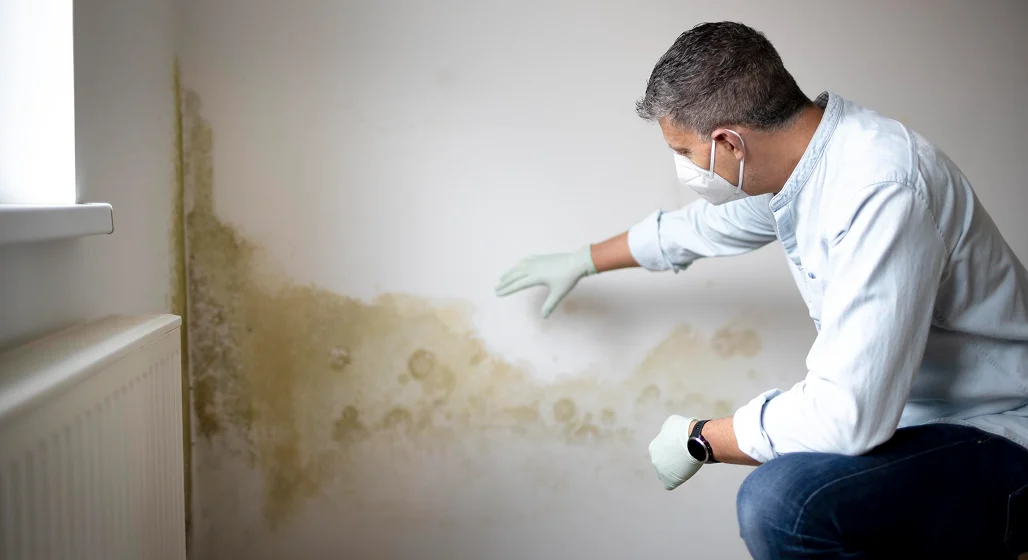
Mold Removal Prices / Average Cost
Mold removal prices can vary widely depending on the size of the affected area, the type of mold,
and the complexity of the remediation process. Understanding typical costs helps homeowners
budget effectively and choose the right approach for their situation.
Typical Pricing Breakdown by Size of Affected Area or Severity:
Cost Estimates for Different Remediation Scenarios:
By understanding these price ranges and factors, homeowners can make informed decisions about
whether to handle mold removal themselves or hire professionals, ensuring both safety and
cost-effectiveness.
Remediate Mold
Homeowners can take several practical steps to remediate mold and reduce the risk of it spreading.
Early intervention is key to preventing more extensive damage and higher remediation costs.
Practical Steps to Address Mold Problems:
When DIY Is Appropriate and When to Call Professionals:
Taking the right steps at the right time ensures that mold problems are managed safely and efficiently,
protecting both property and health.
Prevent Mold Growth
Preventing mold growth is essential to maintaining a healthy home and avoiding costly remediation
in the future. By addressing moisture and ventilation issues early, homeowners can significantly
reduce the risk of mold developing.
Tips to Prevent Future Mold Issues:
Importance of Maintenance, Ventilation, and Moisture Control:
Consistently following these practices helps ensure a mold-free environment and minimizes the
need for costly remediation in the future.
HVAC Systems
Mold can develop in HVAC systems when moisture accumulates in ducts, vents, or on components such
as coils and drip pans. This growth not only reduces the efficiency of the system but can also
spread mold spores throughout the home, posing health risks to occupants.
How Mold Can Affect HVAC Systems:
Costs and Methods for Cleaning or Remediating Mold in HVAC Systems:
Proper care and timely remediation of HVAC systems are crucial to maintaining both system efficiency
and healthy indoor air quality.
Don’t delay mold removal — it’s a health and structural priority.
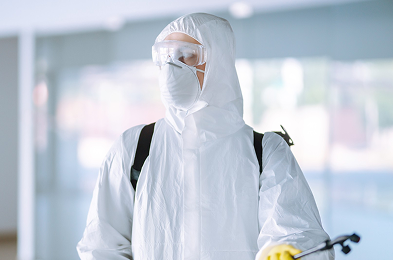
Budgeting for mold remediation involves considering factors such as the size of the affected area, mold
type, extent of damage, and whether professional services are needed. Understanding typical costs helps
homeowners plan effectively, while hiring a California Certified mold remediation team ensures the problem is handled safely and thoroughly. Taking proactive steps like controlling moisture, improving ventilation, and addressing leaks can prevent future infestations. Combining careful budgeting with preventive measures and the expertise of California Certified professionals ensures efficient mold
management, protects property, and maintains a healthy living environment.

